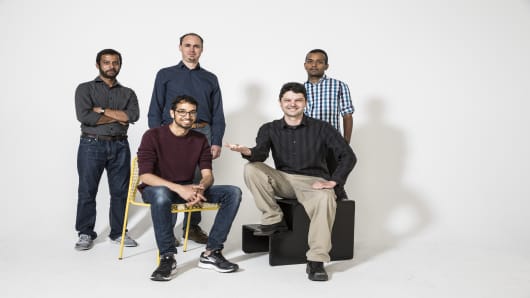Imagine an insect that can alight along a pipeline to sniff out gas leaks, swoop beneath plants to detect pests and disease, and slip into tiny spaces to find disaster survivors. Now imagine holding a laser that can control its every move.
With the rapid advances in drone technology spanning the 20th century, it should come as no surprise that miniature flying robots are on the horizon: Between now and 2020, Goldman Sachs' forecasts a $100 billion market opportunity for drones, helped by growing demand from the commercial and civil government sectors.
What is surprising is that it has taken researchers more than two decades to finally come up with a fully autonomous version. That's because the electronics needed to power and control the wings were so heavy that, until now, flying robotic insects had to be tethered to a wire attached to an external power source.
Yet a team of engineers at the University of Washington, led by assistant professor Sawyer Fuller, were able to figure it out. Relying on funding from UW, they created RoboFly, a robo-insect powered by an invisible laser beam that is pointed at a photovoltaic cell, which is attached above the robot and converts the laser light into enough electricity to operate its wings.
Because the laser alone can't provide enough voltage to move the wings, the team designed a circuit that boosts the 7 volts coming out of the photovoltaic cell up to the 240 volts needed for flight. To give RoboFly control over its own wings, the engineers added a microcontroller to the same circuit, which acts like its brain, according to Vikram Iyer, a doctoral student in the UW Department of Electrical Engineering who is part of Fuller's team. "It tells the wings things like, 'Flap hard now' or 'Don't flap,'" he said.


